About Busan, Korea
About Korea
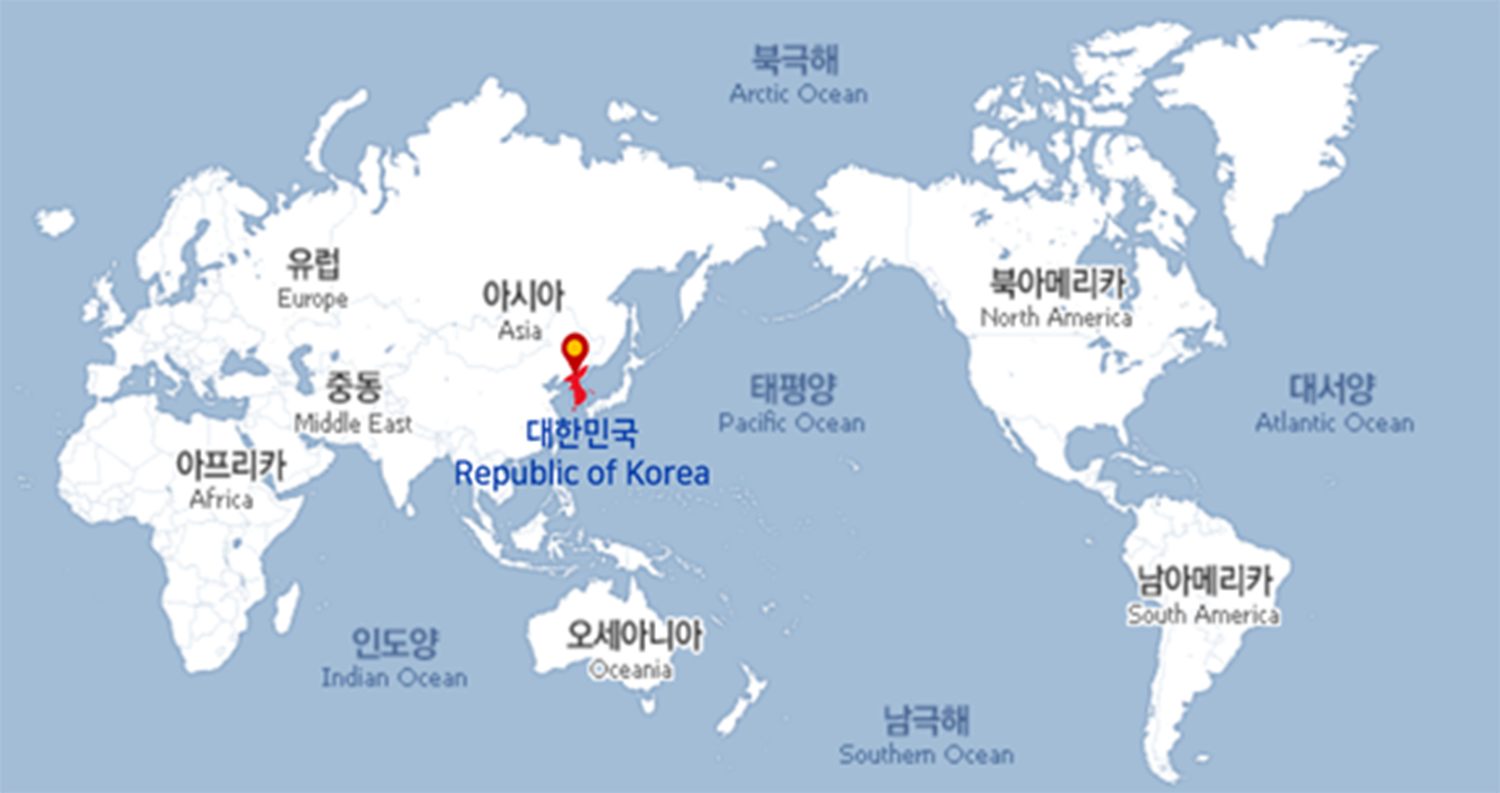
South Korea, officially known as the Republic of Korea, is located in the southern part of the Korean Peninsula in East Asia, with Seoul as its capital. With over a millennium of history, Korea has evolved through the Three Kingdoms period, the Goryeo, and the Joseon dynasties, developing a rich and diverse culture.
Modern Korea is a global leader in industries like electronics, automobiles, and IT. Traditional foods such as kimchi, bulgogi, and bibimbap are popular worldwide, and the Korean Wave (Hallyu), including K-pop and dramas, has significant global influence.
Korea’s natural beauty is marked by four distinct seasons. Cities like Seoul and Busan offer a blend of modernity and tradition, while historical cities like Gyeongju and Jeonju provide a glimpse into Korea's cultural heritage.
With one of the highest internet and smartphone penetration rates, South Korea exemplifies an IT powerhouse. Despite rapid development, it harmonizes traditional and modern elements, creating a unique cultural identity.
About Busan
Busan is the southernmost global maritime city on the Korean Peninsula and the second-largest city in South Korea after Seoul, a world-class metropolis. Its numerous beaches are vibrant with youth and energy, its ports and docks are lined with vast quantities of containers and trade goods, and its streets and performance halls are rich with the scent of culture and art. Additionally, Busan is a treasure trove of geological heritage with a focus on sustainability and serves as a hub for global climate change measures, being home to the APEC Climate Center. In areas like Haeundae and Gwangalli, futuristic skyscrapers are continually reshaping the skyline, and romantic festivals such as the international film festival and fireworks festival heat up the city throughout the year.
The city also embodies a history of great transformation. During the Korean War, refugees from various regions, including North Korea, used the Nakdong River as a shield to preserve peace on the Korean Peninsula and laid the foundations for economic growth. Diverse cultures flowing in from all over have fused together, transforming Busan into an artistic city where the fragrance of culture and art thrives. With the construction of Gadeok New Airport, Busan is evolving into a global hub city focusing on finance and logistics.
Experiencing Busan: The Best of the City
- Area Attractions
-
Haeundae Beach
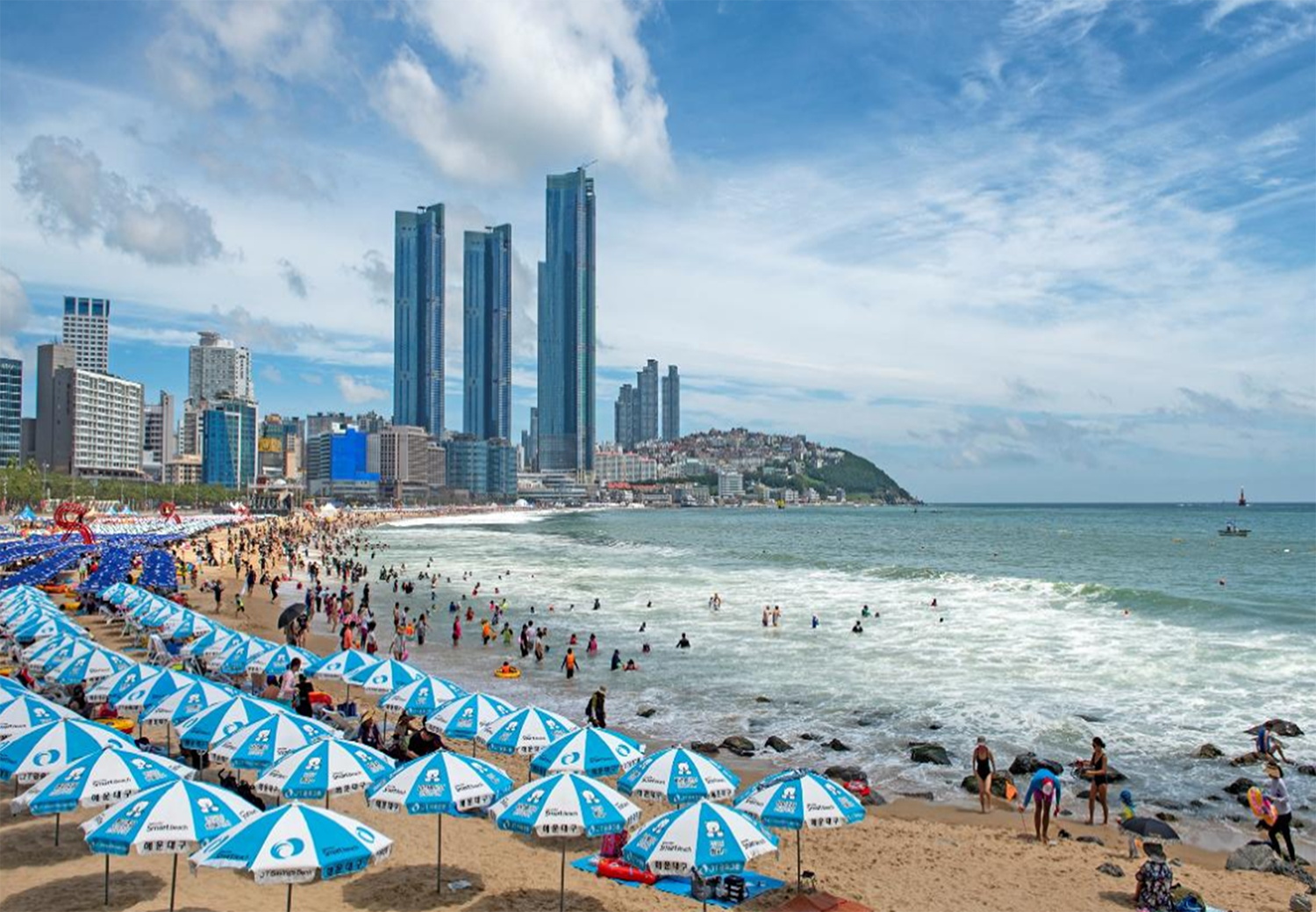
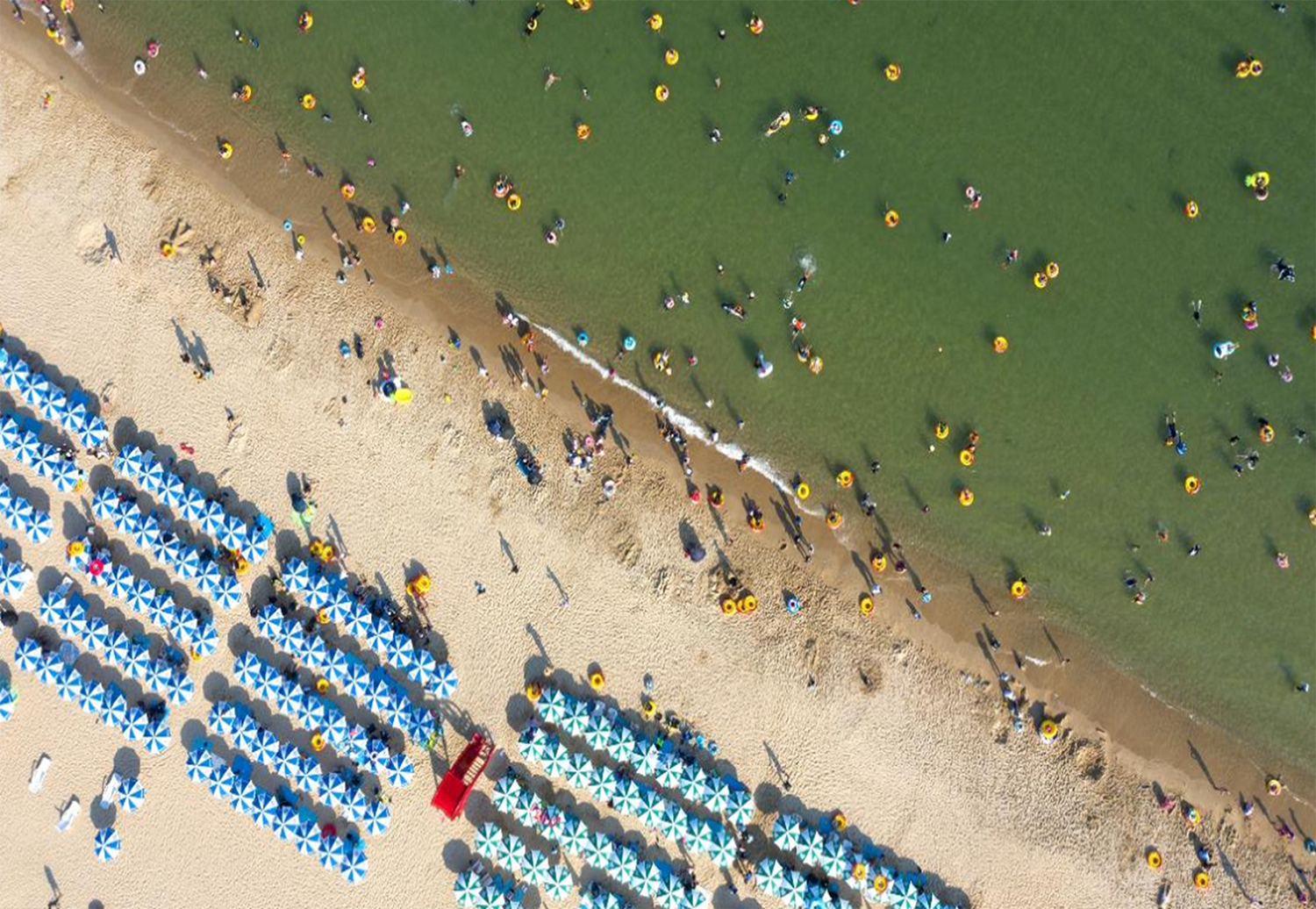
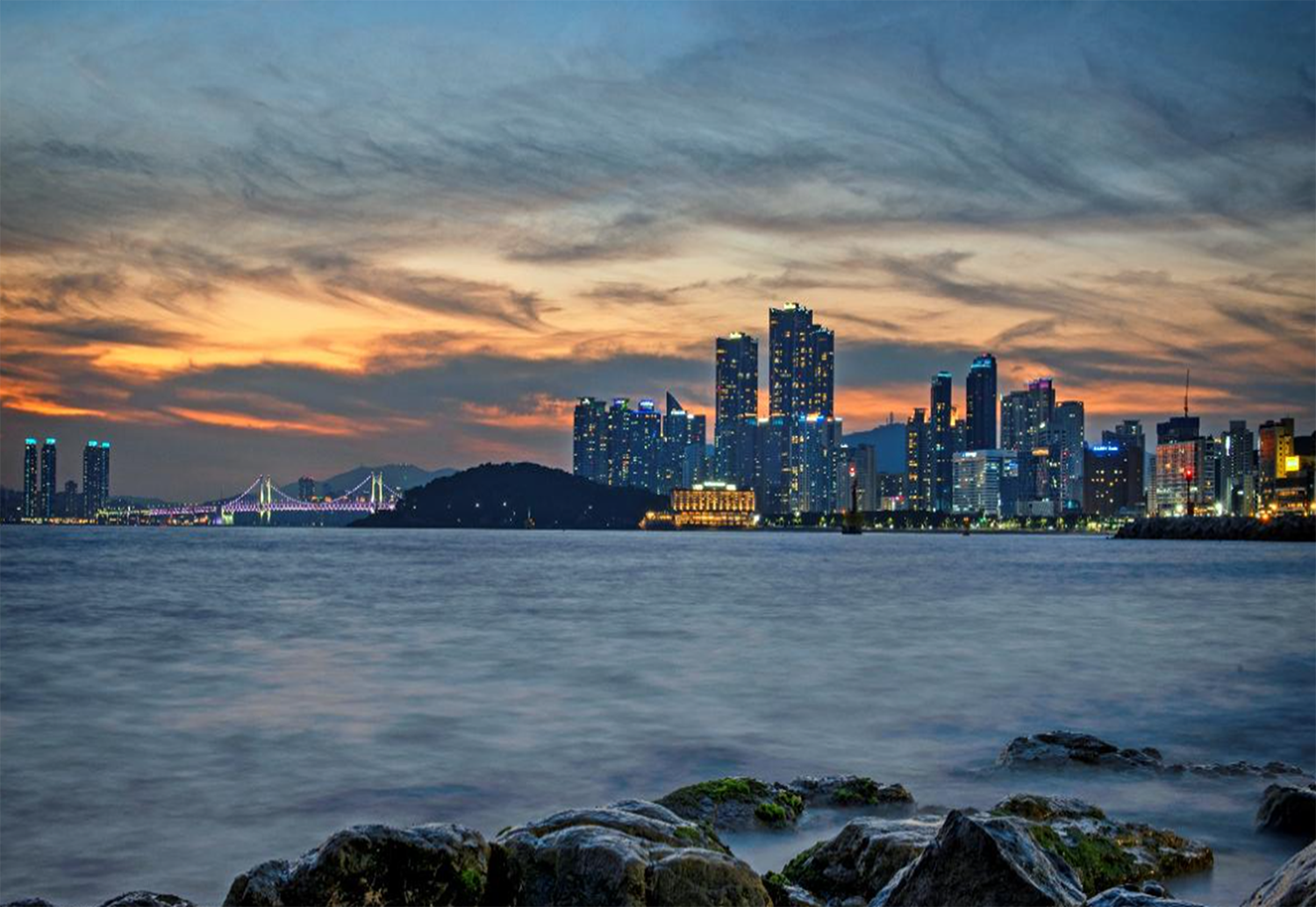
- When people mention Busan, the first thing that comes to mind is the sea! Among Busan’s various beaches, Haeundae Beach is the best-known destination. Not only in summer but all year round, Haeundae Beach attracts a multitude of tourists seeking the dynamic atmosphere of Busan.
- Haeundae Beach is one of Korea’s hottest summer destinations, attracting over 10 million visitors every season. Its 1.5 km white sandy beach is lined with many entertaining facilities, attracting men and women of all ages from all parts of the world. Haeundae Beach has become the most popular spot for foreign tourists and vacationers from all over the country who enjoy swimming and sunbathing on a sunny beach.
Places of interest nearby: The Dongbaekseom Island, The Bay 101, The Marine City
-
Gwangalli Beach
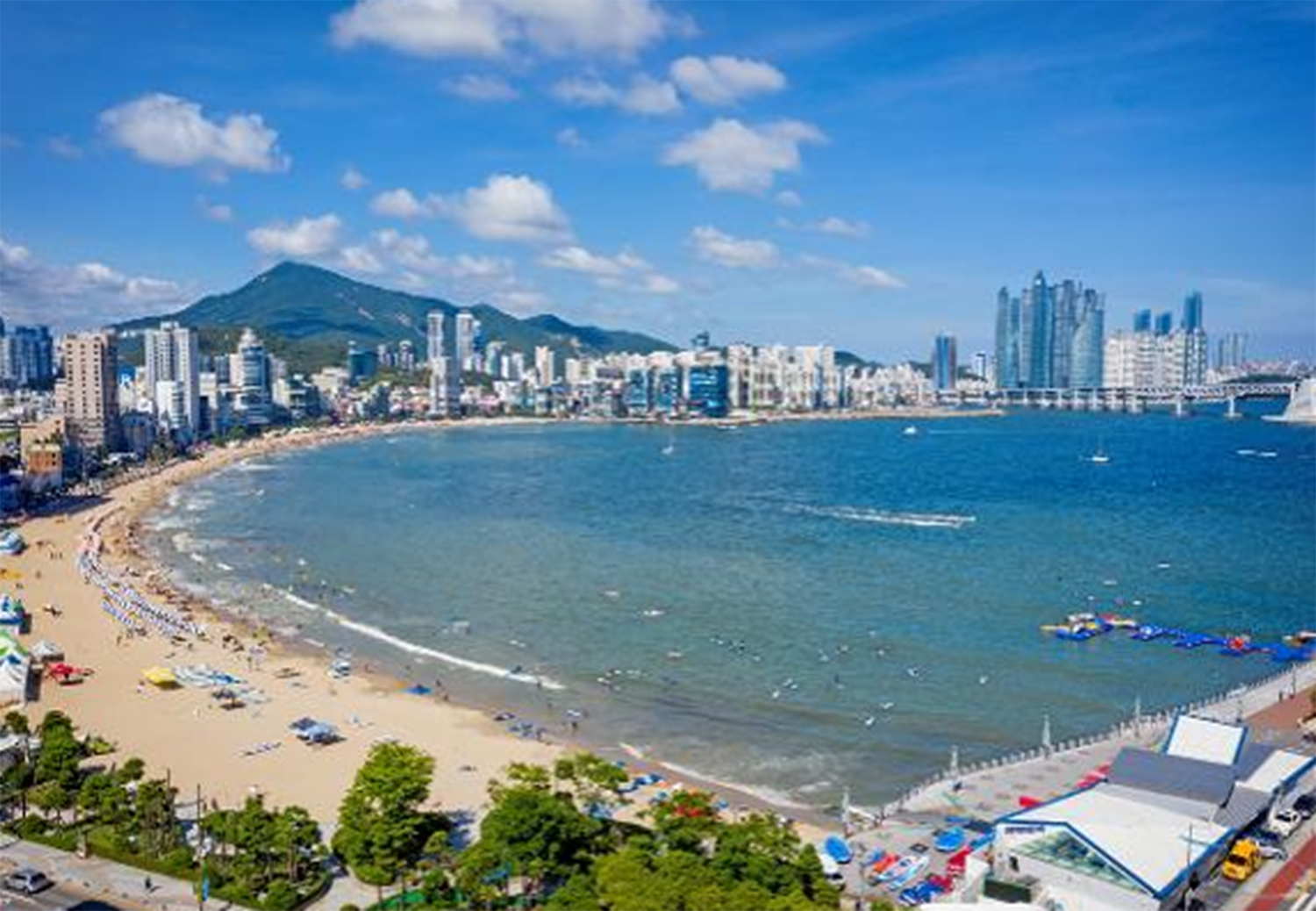
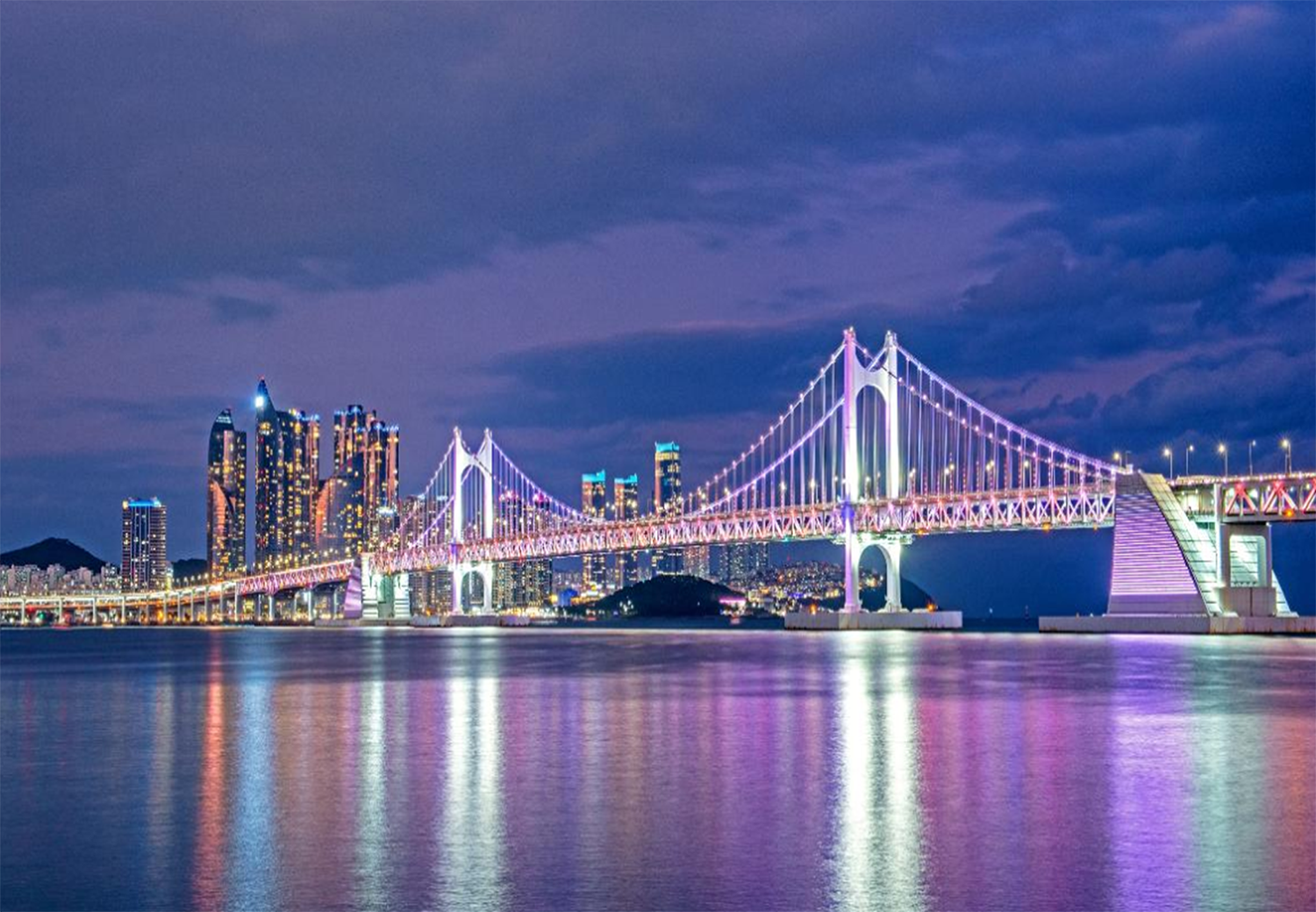
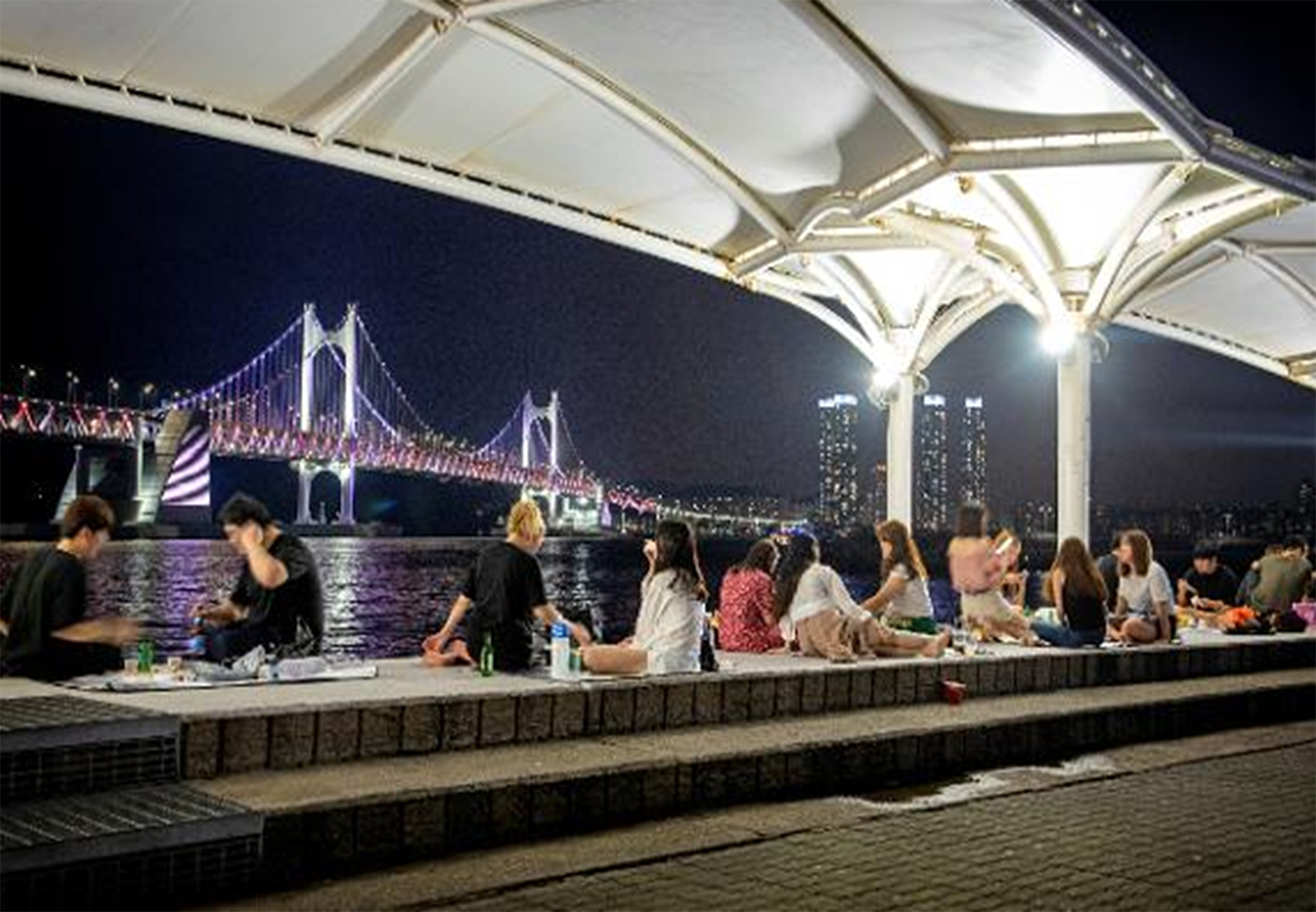
- Gwangalli Beach is a famous beach and one of Busan’s representative hot spots together with Gwangandaegyo Bridge. It is the closest beach to the city center and also a trendy meeting place for Busan’s youth.
- Recently, Gwangalli Beach has been equipped with facilities for diverse marine sports, attracting many enthusiasts. From a motorboat, banana boat, and bandwagon to paddleboarding and windsurfing, visitors can enjoy any marine sport they fancy according to their level.
- When night falls, Gwangalli is illuminated with a myriad of beautiful lights all along the seafront. The background of the jet-black sea, the spectacular-colored lights of shop signs and neon signs, and the Gwangandaegyo Bridge, whose lighting changes color every second, creates a romantic and magical atmosphere.
Places of interest nearby: The beach themed street, The Millak Fresh Fish Street, Waterside Park
-
Haedong Yonggungsa Temple
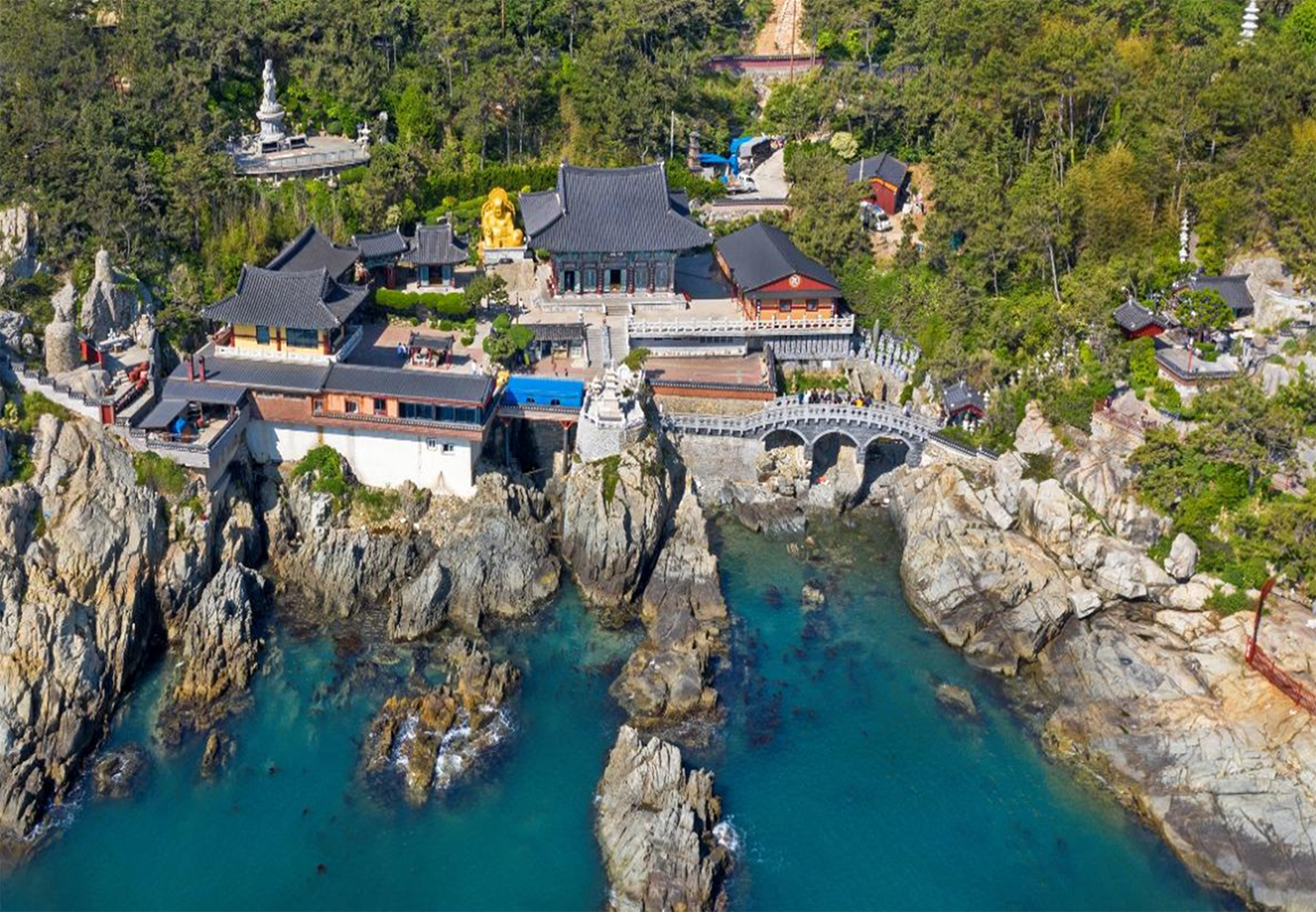
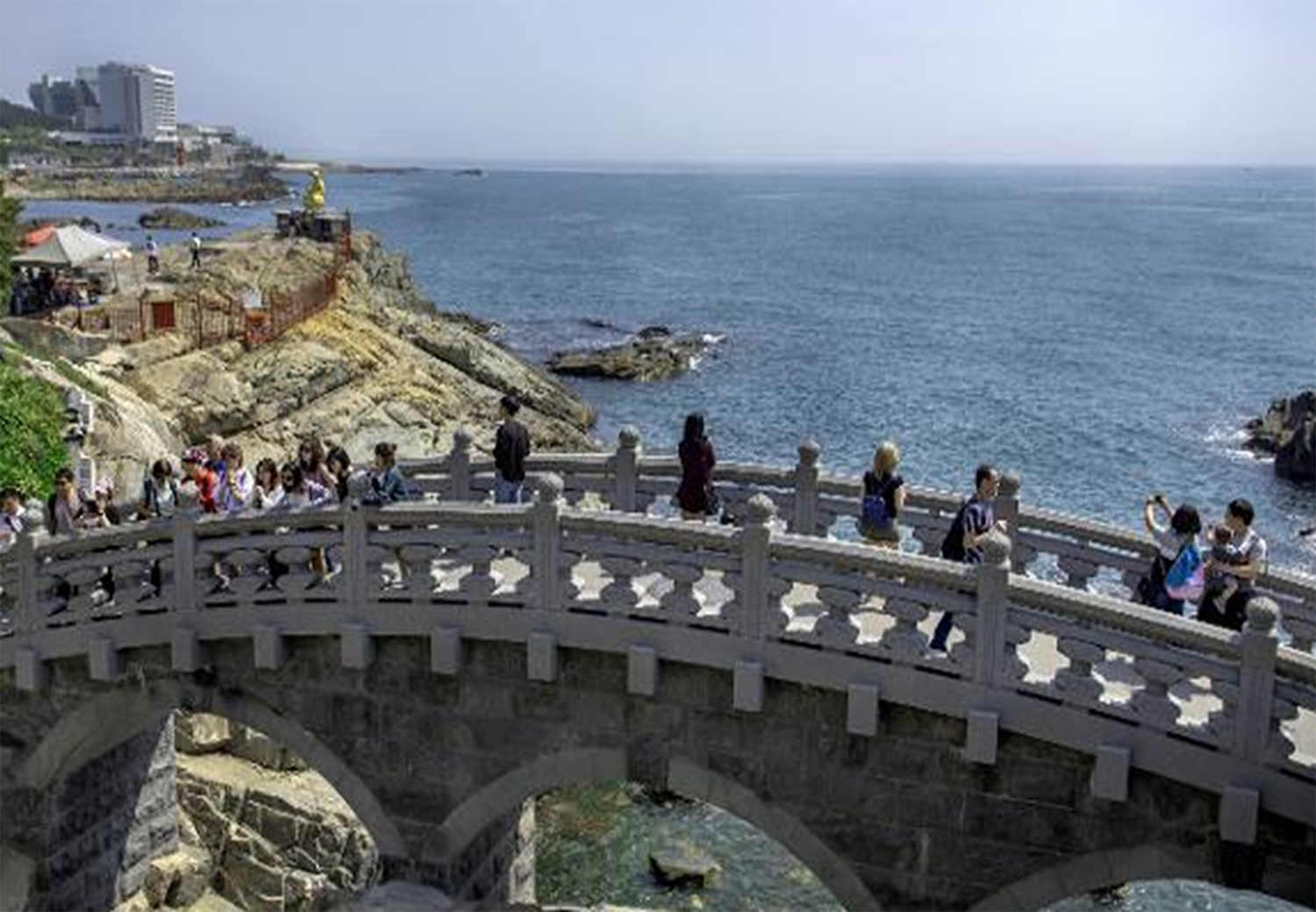
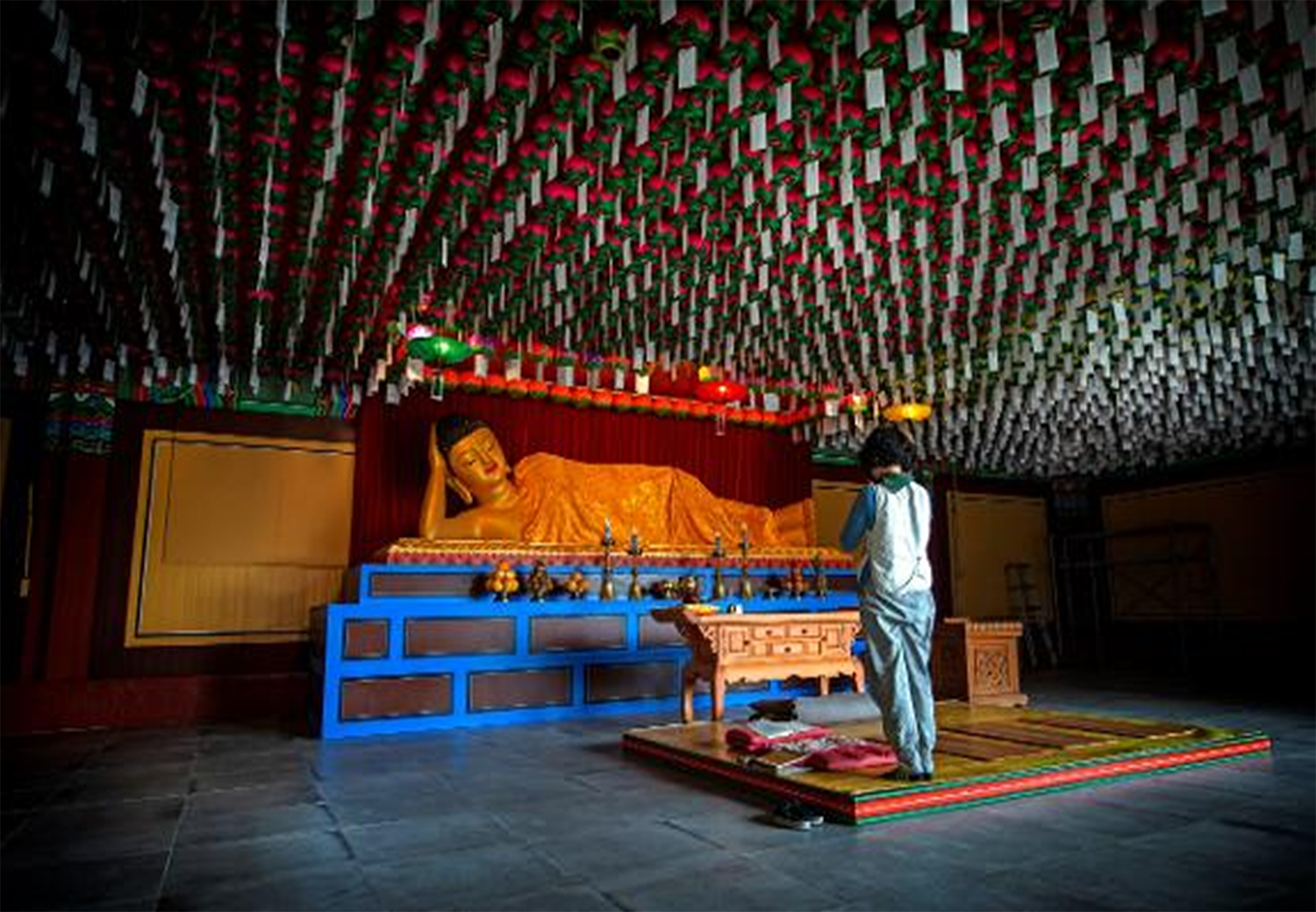
- Located on the coast of Sirang-ri, Gijang-gun, Busan, Haedong Yonggungsa Temple received its name from a dream of Buddhist Monk Jeongam whom Avalokitesvara Bodhisattva ascended on the back of a dragon by the coast.
- On the way to the precincts of the temple, you will first see the 12 zodiac animal deities where you can find the animal of your birth year and take pictures. The 12 gods protect the land in 12 directions, block the invasion of evil spirits, and act as fairy godmothers that wish for the five blessings. Go through the Iljumun Gate, and reach the 108 stairs connected through the pine grove to see the Haedong Yonggungsa Temple embracing the blue ocean finally. Above Yongmungyo Bridge, connected to the temple, many visitors throw coins and make wishes. Legend says that the Yonggungsa Temple grants at least one wish.
- Known as the most beautiful temple in Korea, the whole interior becomes a photo zone with an oceanic view. If you want to photograph the breathtaking view of the ocean, climb up the stairs next to the Daeungjeon Hall. Meet the benevolent Seaside Avalokitesvara Bodhisattva, and take memorable photographs where the blue sea becomes yours below your feet.
Places of interest nearby: Haeparang Trail Route 1(The coastal trail, The sunrise rock)
-
Jagalchi Market
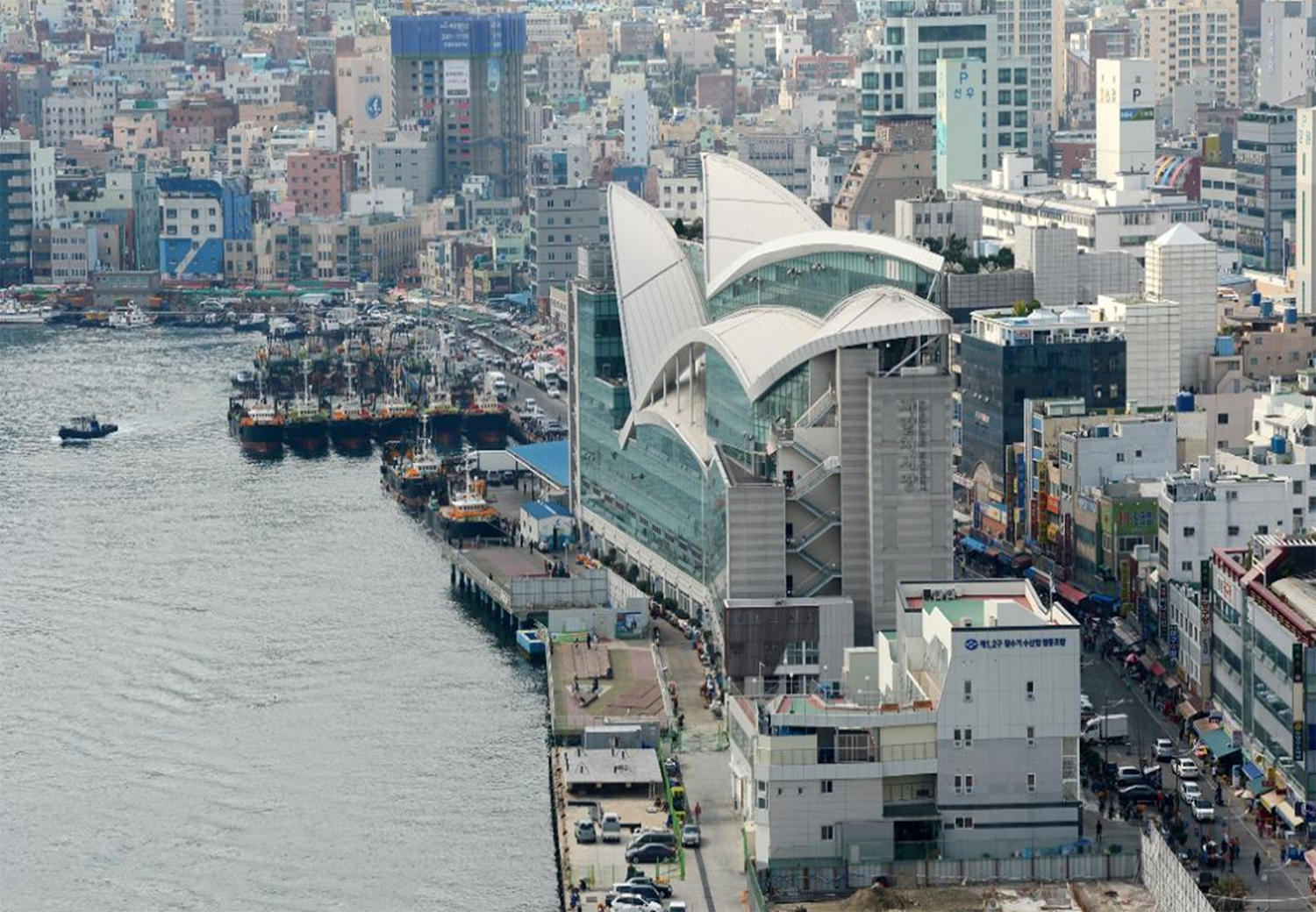
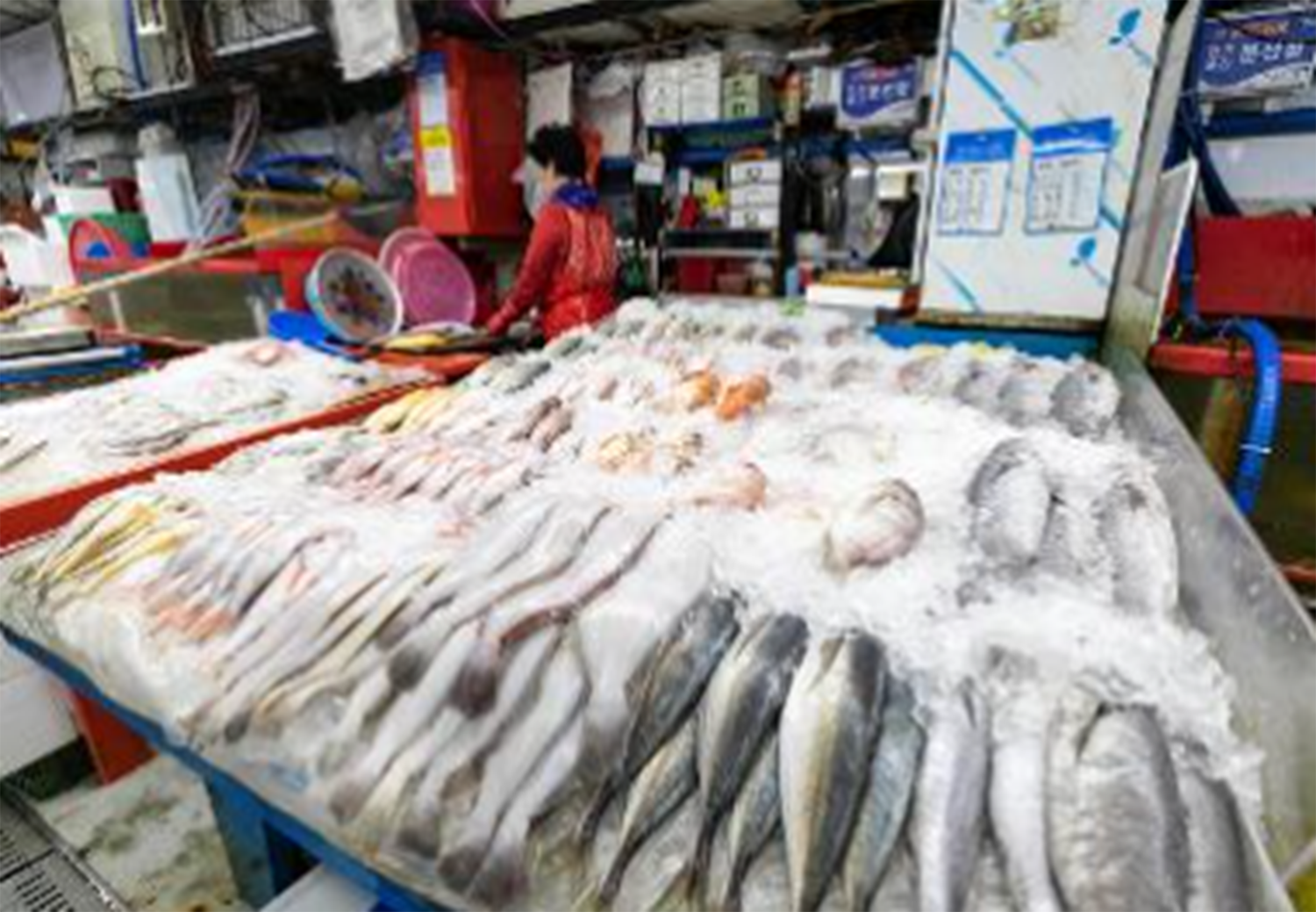
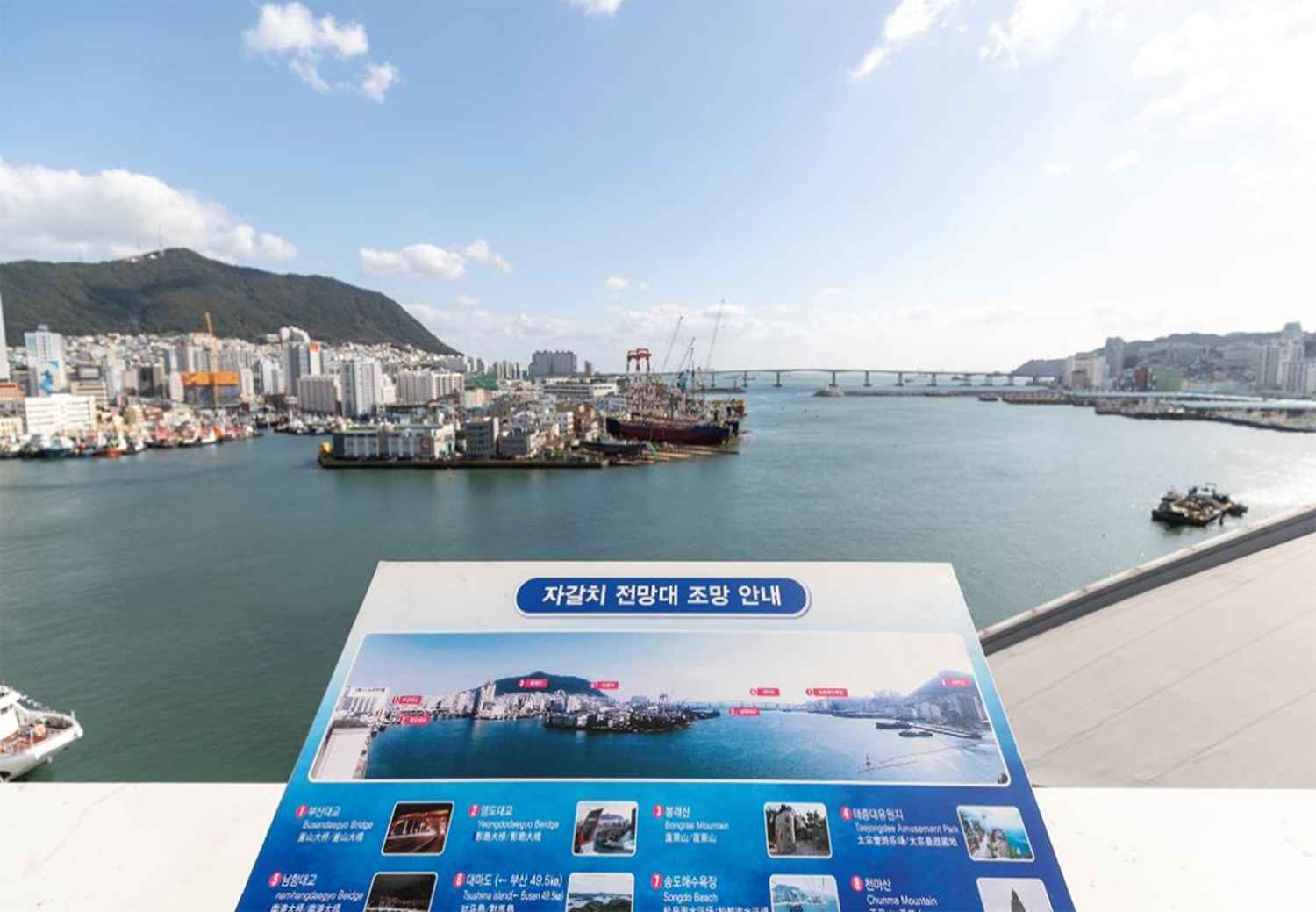
- “Oiso (Come), Boiso (See), and Saiso (Buy)!” is a famous phrase that represents the Jagalchi Market. Along with the nearby Gukje Market and the Bupyeong Kkangtong Market, the Jagalchi Market is Busan’s main traditional market.
- The name of the market, “Jagalchi,” originates from the physical form of the area, which has many big pebbles (jagal) on the seashore. From the Japanese occupation, several fish street stalls were created in this area. Because of the Korean War, numerous refugees came to Busan, and many shanty houses were built around the area. As such, a number of fish street stalls were formed to become a large fish market, which is now the Jagalchi Market.
- This dynamic, outdoor Jagalchi Market is different from the neat and modern indoor market. If you come to the market in the early morning, you will see the market in full vitality. The fish products range from the dried fish to live, fresh fish, which was just caught from the sea. Moreover, busy merchants make the atmosphere of the market livelier as well.
Places of interest nearby: Gukje Market, Bupyeong Kkangtong Market
-
Gamcheon Culture Village
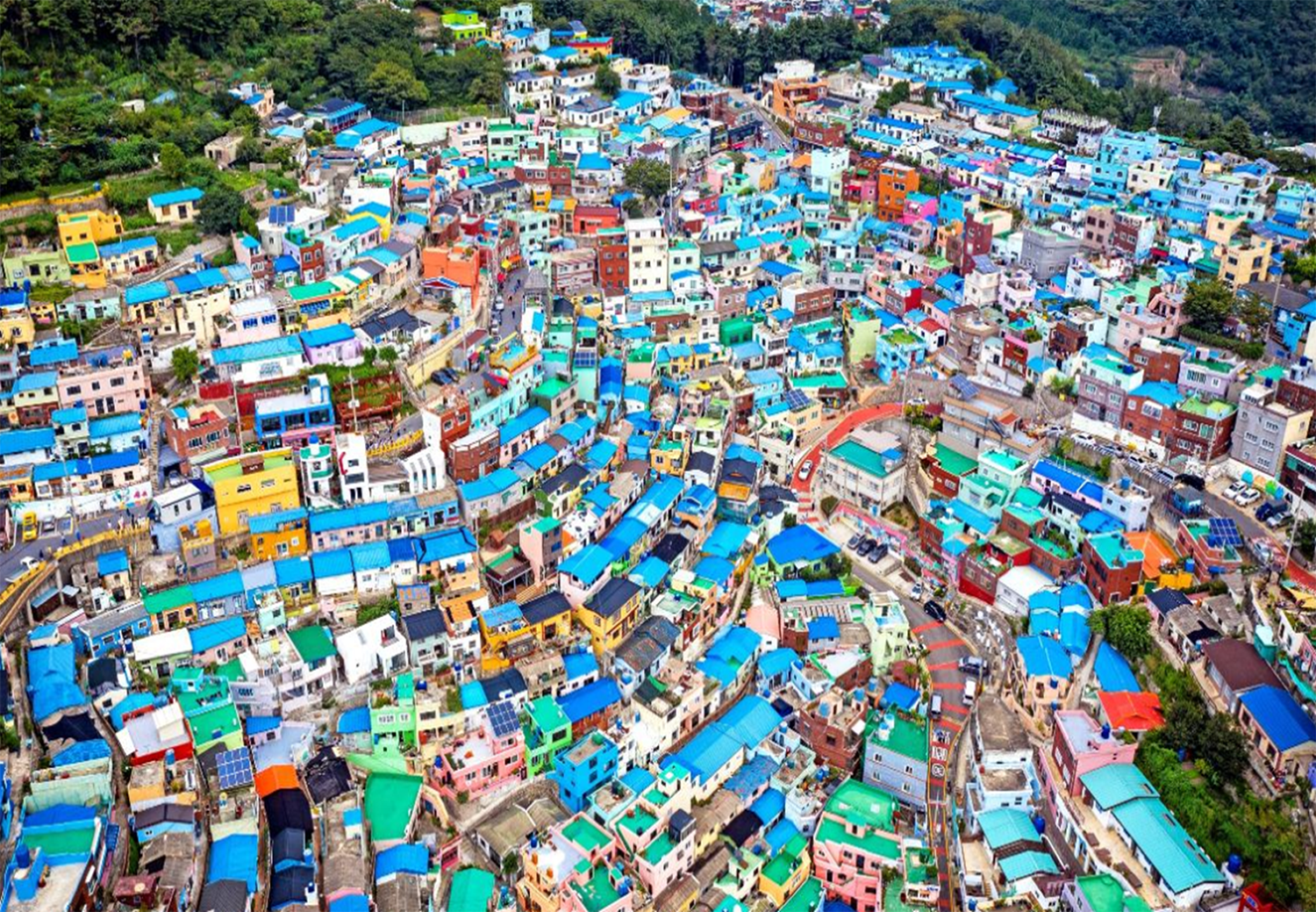
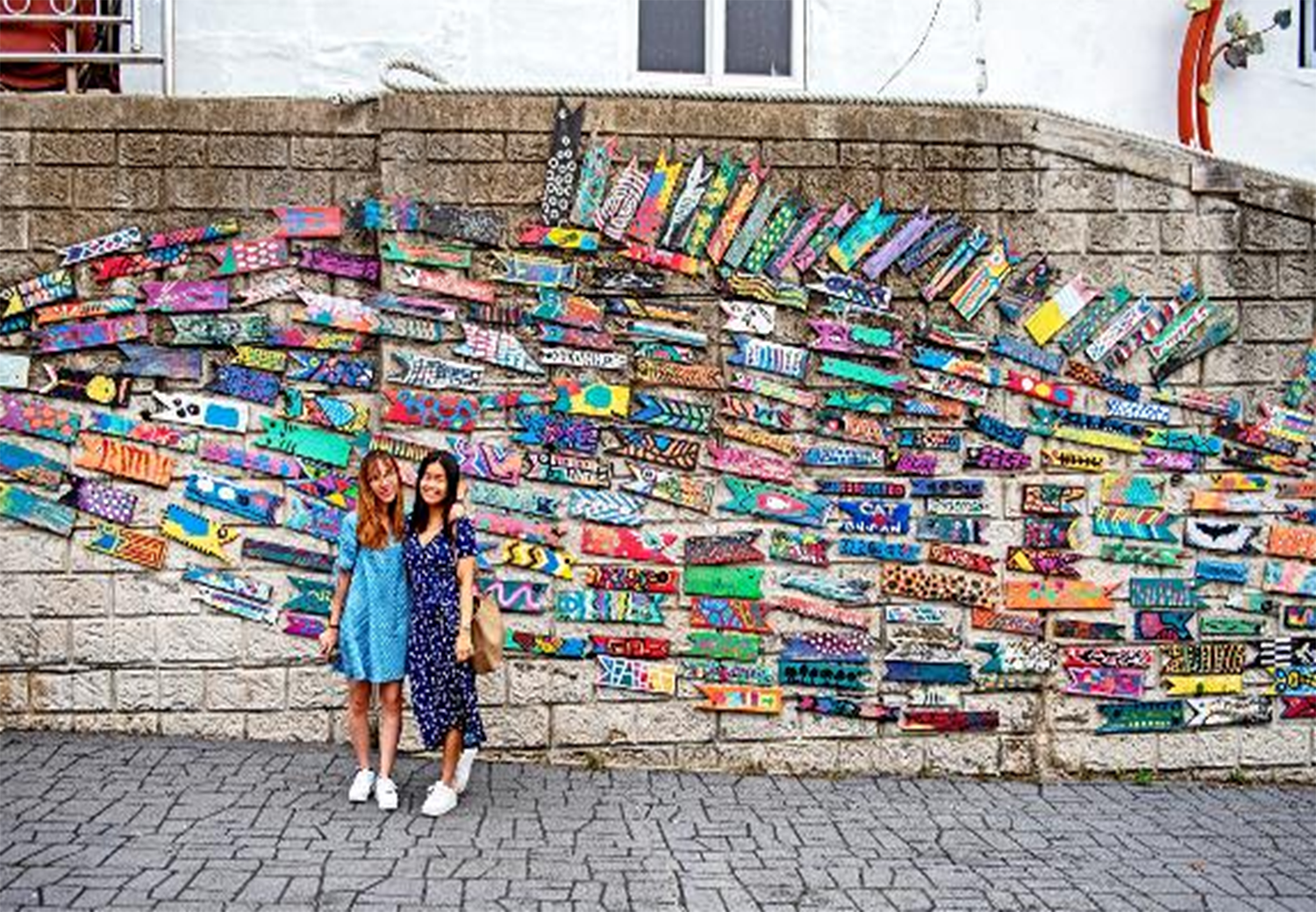
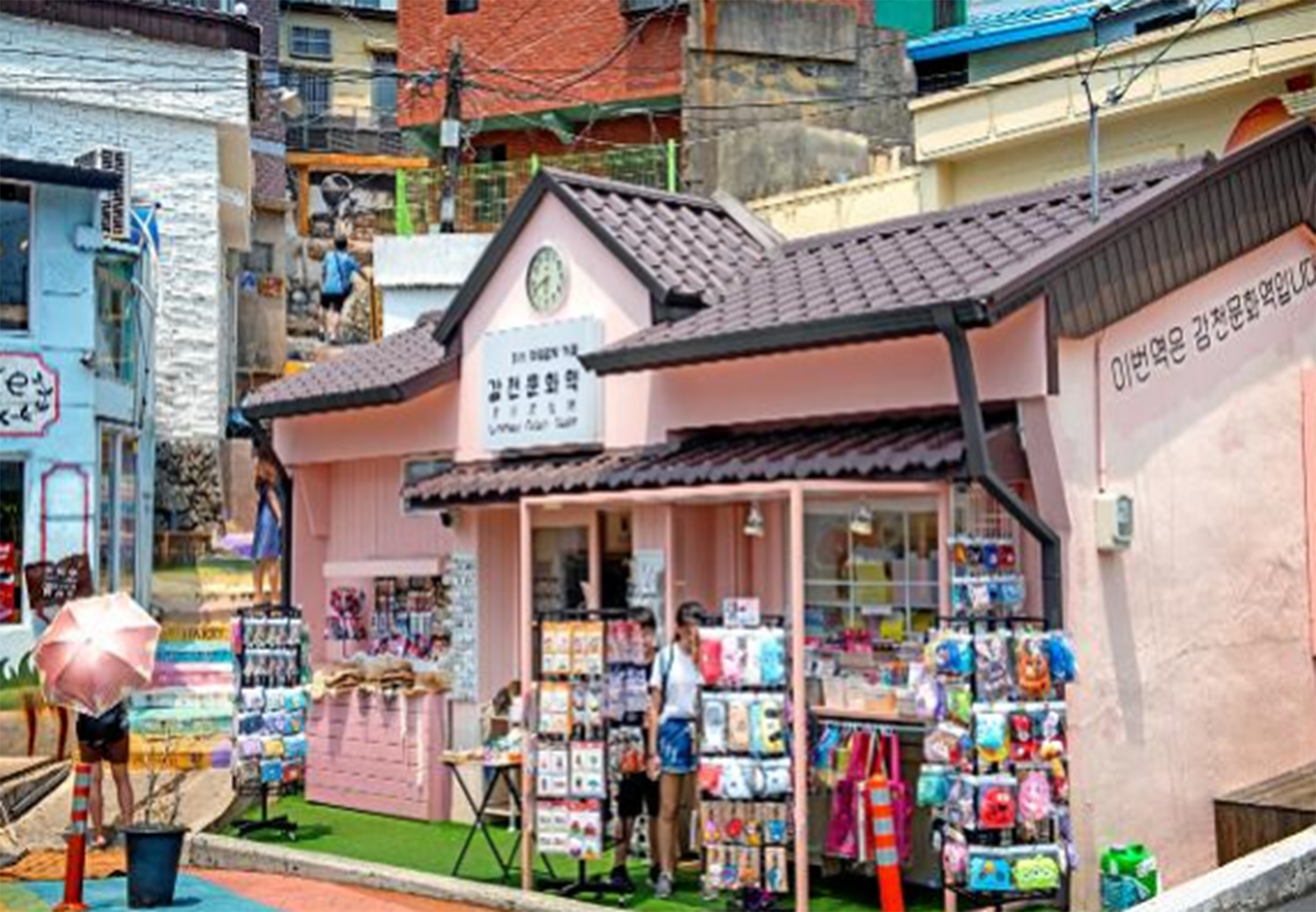
- Colorful roofs that seem to touch the sky, A warmth that covers the whole village, here is Gamcheon Culture Village in Busan.
- While the village’s beautiful landscape gave it the nickname of the Machu Picchu of Korea, the town was a part of the painful history of Busan. Refugees settled in Gamcheon Village during the Korean War and cultivated the mountainous region to make a living. In 2009, students, artists, and residents decorated the village as a part of the Village Art Project, and the town grew into a leading tourist attraction of Busan since then.
- The Gamcheon Culture Village, now a landmark of west Busan, is favored by tourists as an experience-based destination. Follow the stamp map purchased at the village information center to complete the alley tour. Stop by the small museum located at the Gamcheon Culture Village entrance to listen to the village’s story and start the tour.
Places of interest nearby: Busan Tower, Yongdusan Park, Daesin Park
-
Taejongdae Park
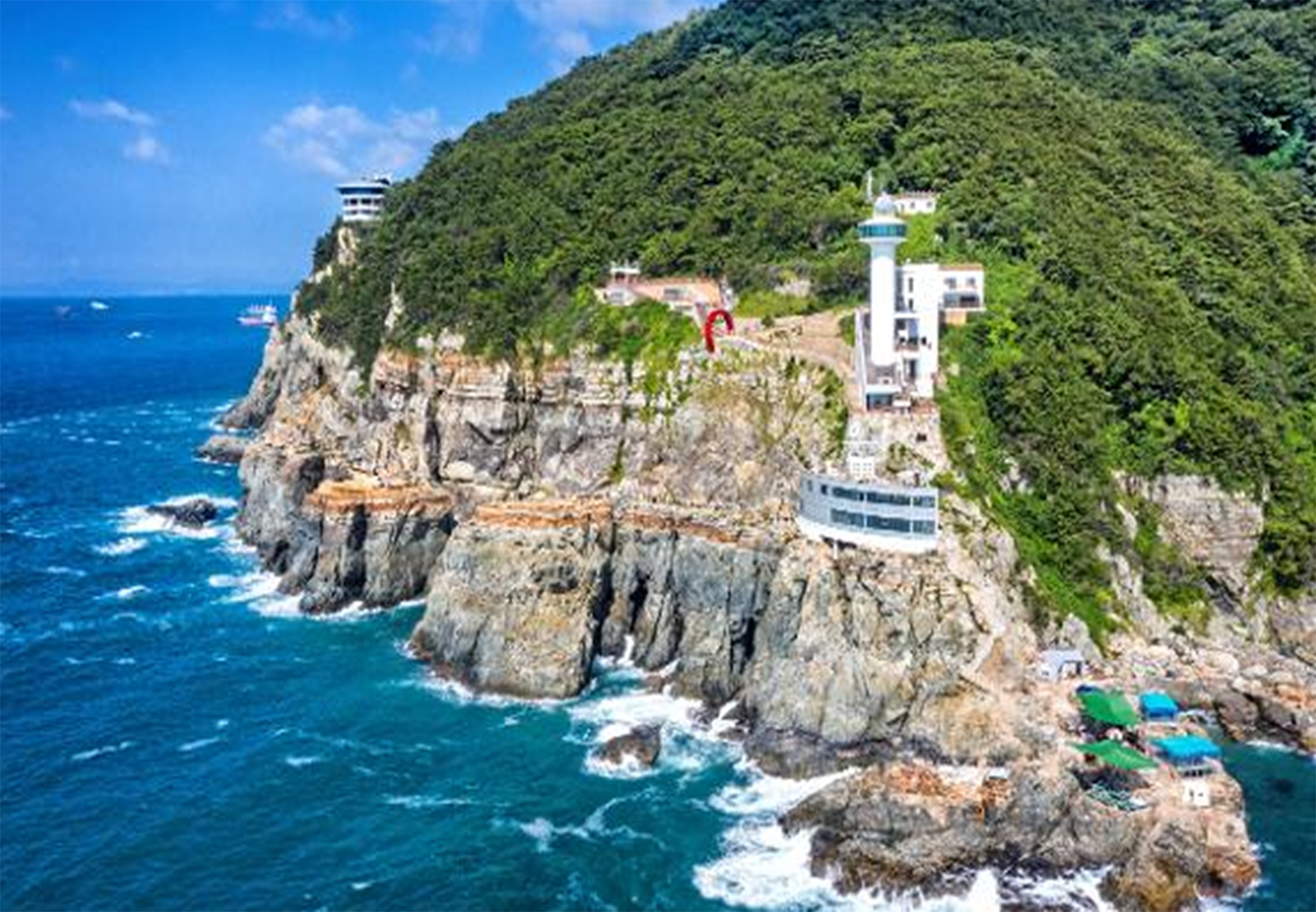
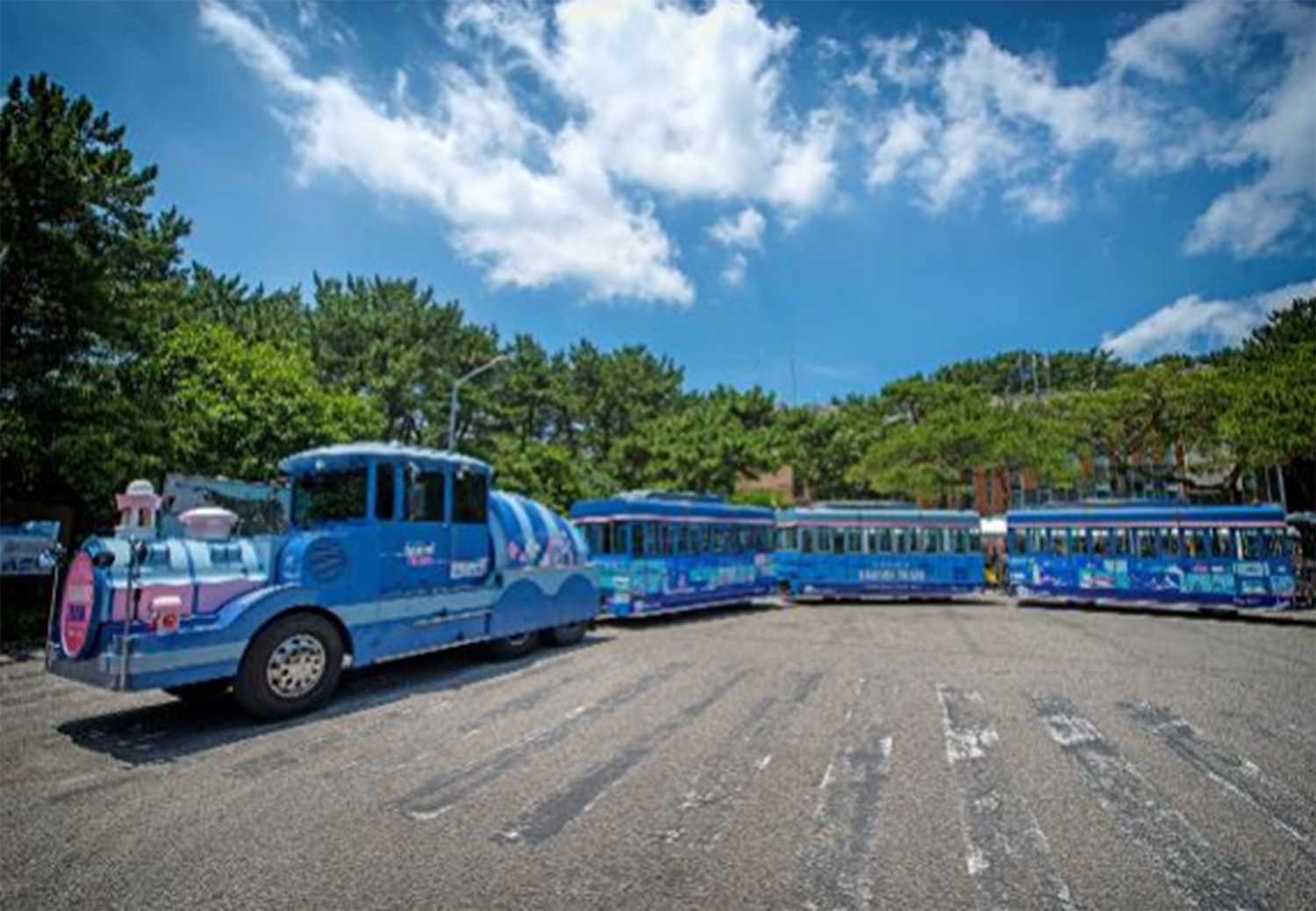
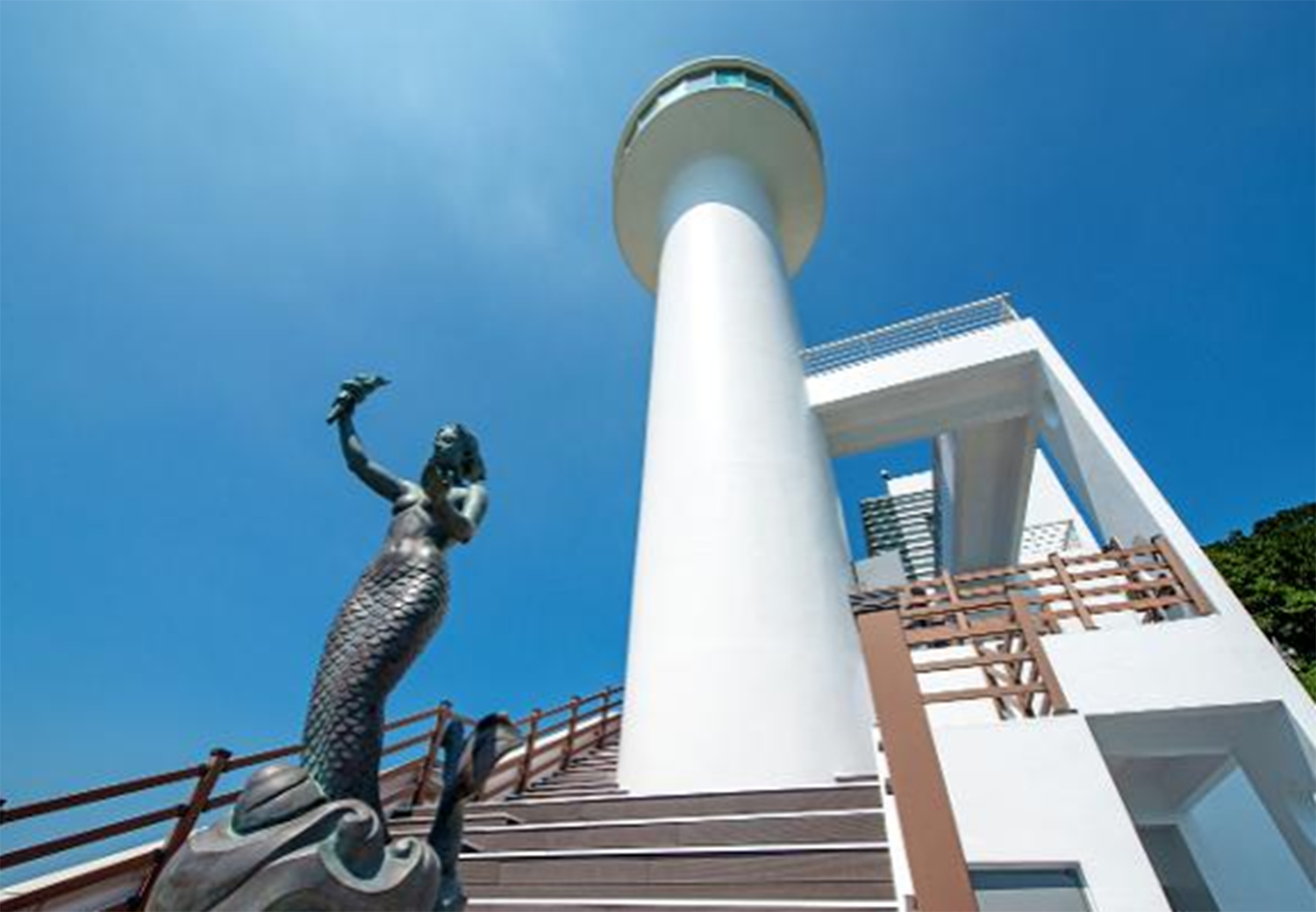
- This place allows you to walk along the green forest path and view the blue ocean simultaneously. The multicolored rocky coast boasts its beauty formed by years of crashing waves. We’re talking about Taejongdae Park at the southern end of Yeongdo, Busan. Taejongdae was named after King Taejong Muyeol of Silla, who used to stop by the region and practice archery as he was mesmerized by the beauty of the landscape. Taejongdae Park, where unique rocks are formed and visitors are greeted by the dense forest surrounded by the deep blue ocean, is a leading travel destination in Korea.
- Taejongdae Park has an excellent observatory point that looks out into the ocean and a well-organized maritime pebble yard and a connecting stairway path. Travelers get excited at the changing scenery as they walk around. Despite being located near the city, the place feels like it’s less tainted by the dirt of the world.
Places of interest nearby: Korea National Maritime Museum
- Place to go, Things to do near Lotte Hotel Busan
-
Hwangnyeongsan Beacon
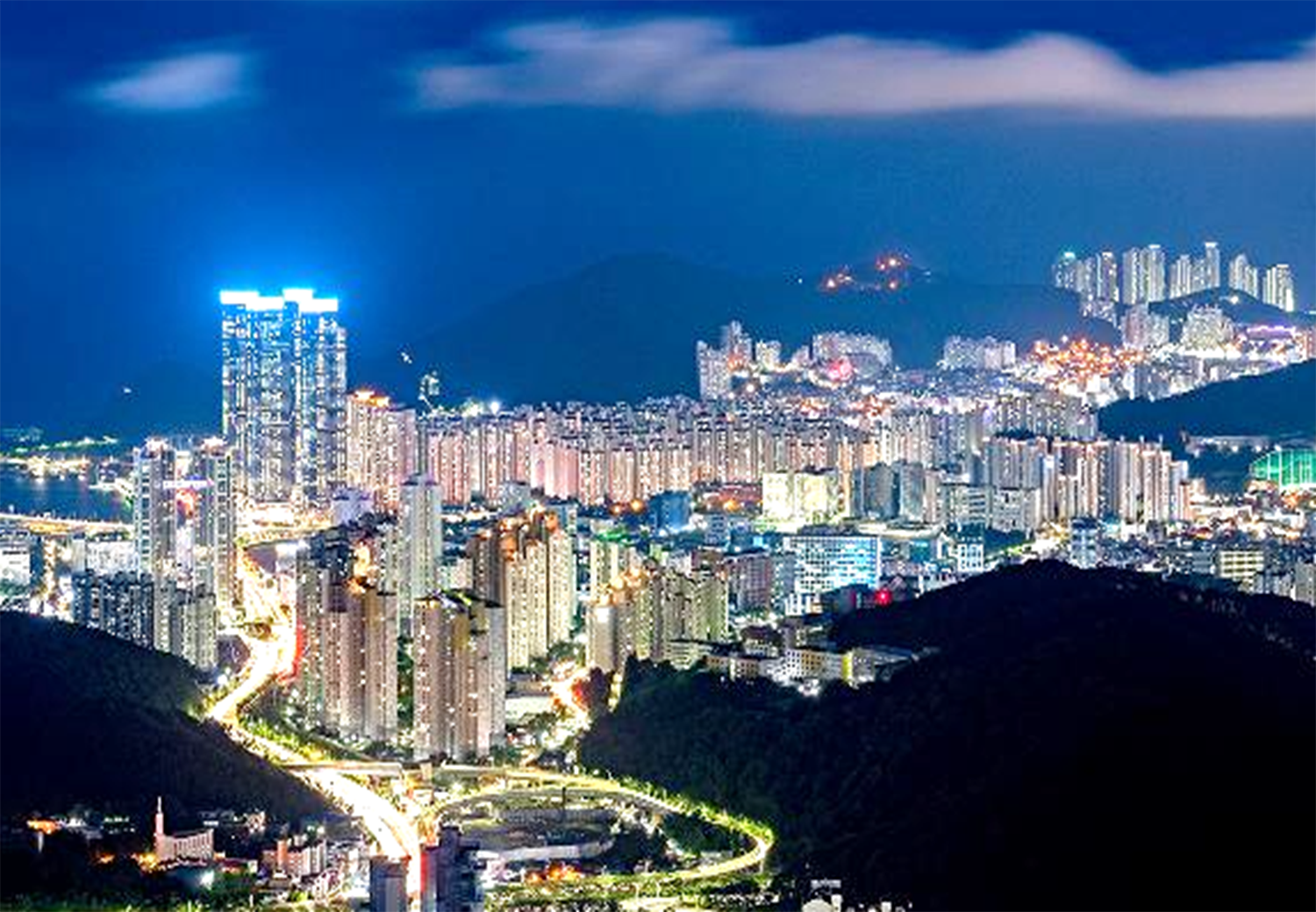
The beacon is located at the peak of Hwangnyeongsan Mountain and presents a world of mesmerizing light. The mountain is situated at the heart of downtown Busan, allowing the best view of Busan.
- LocationSan 50-1, Jeonpo-dong, Busanjin-gu, Busan
- ContactTel. +82-51-605-4065
- Closing DatesOpen all year round
- HoursEvery day
- Service FeesFree
-
Jeonpo Café Street
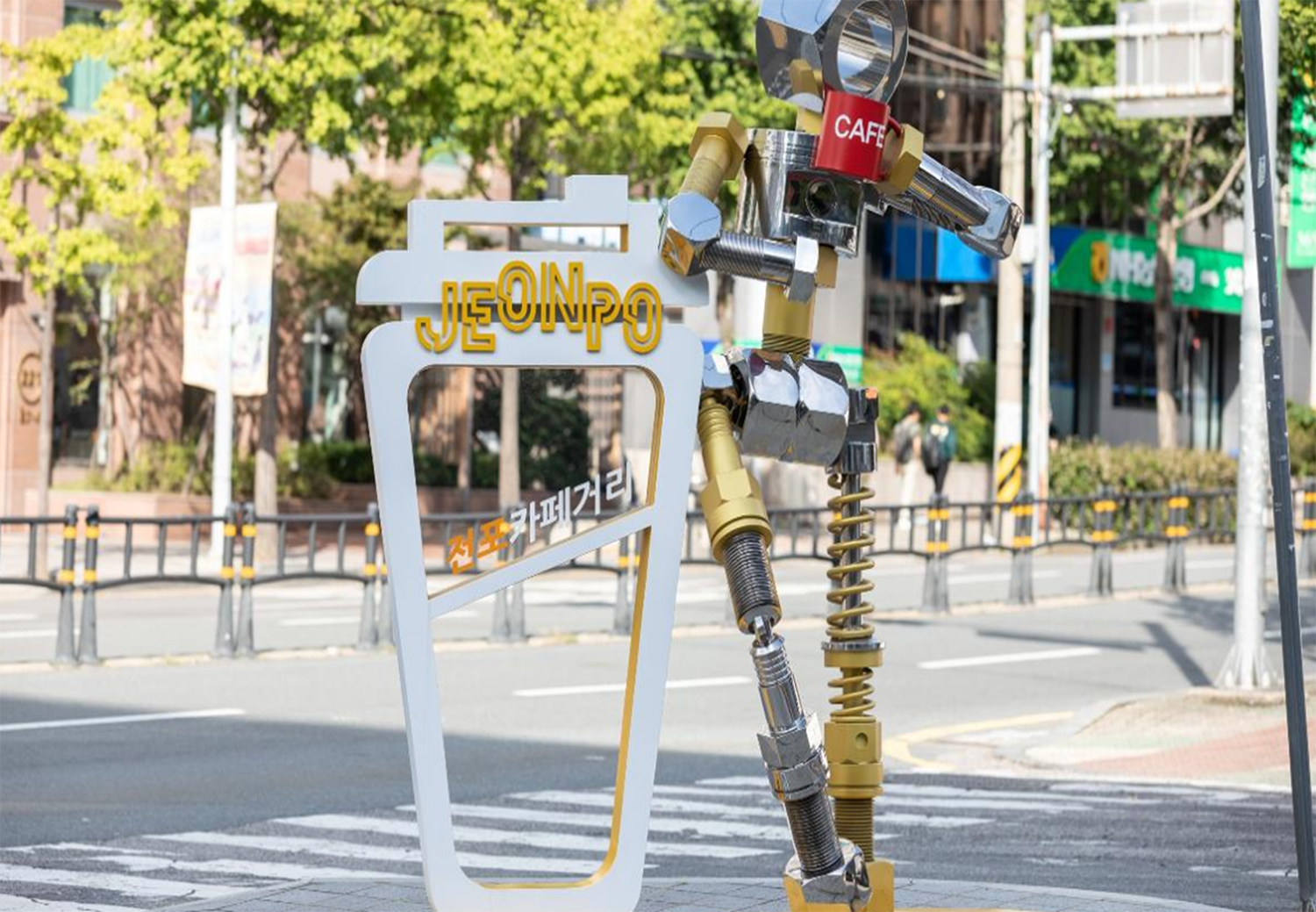
Jeonpo Cafe Street became more famous after being selected in The New York Times’ 52 World Destinations of the Year in 2017.
- Location26, Jeonpo-daero 209beon-gil, Busanjin-gu, Busan
- Traffic InformationTake Busan Metro, get off at Jeonpo Station, and walk for 6 min from Exit 7.
Take Bus, get off at Bujeon Municipal Library, and walk for 2 min.
-
Hocheon Village
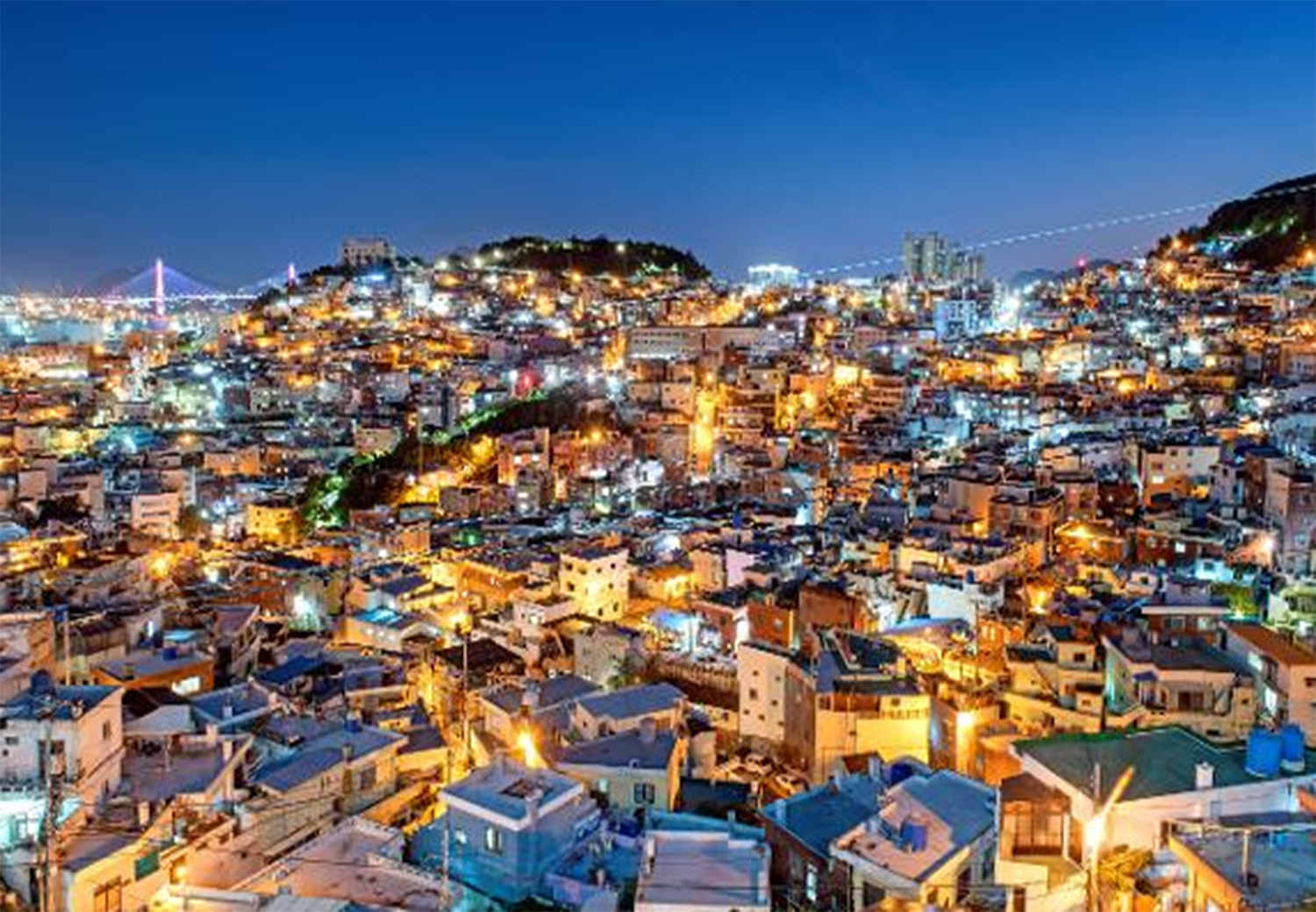
In the old days, tigers were said to frequently roam the mountain’s rough and irregular sides.
- Location491, Eomgwang-ro, Busanjin-gu, Busan
- Closing DatesOpen all year round
- HoursEvery day
- Service FeesFree
- Traffic InformationTake Bus 87 at the bus stop opposite Seomyeon Lotte Department Store → Get off at the Entrance to Hocheon Village
-
Children’s Grand Park
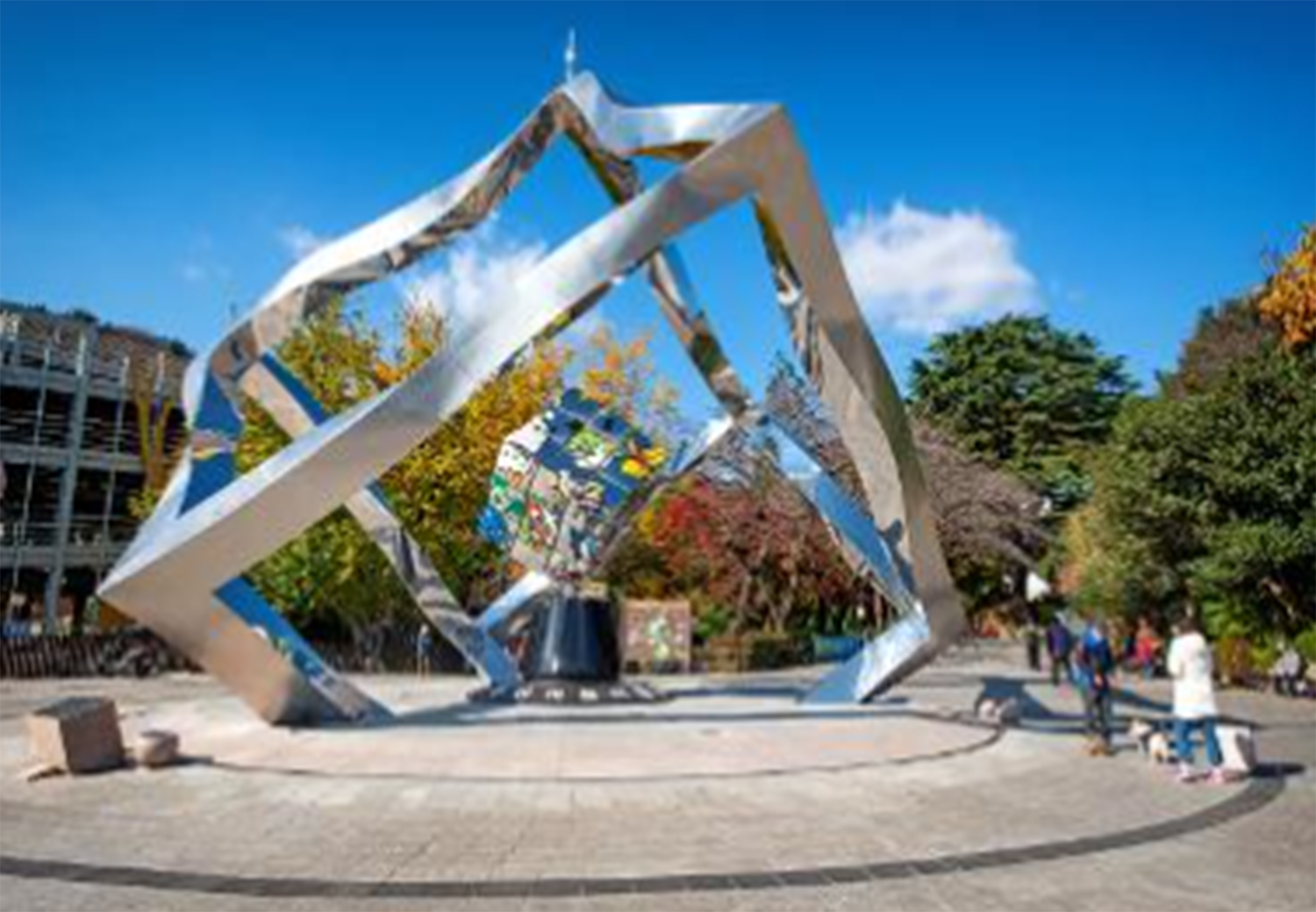
Busan Children’s Grand Park has transformed into families’ favorite location that provides a beautiful circulatory walking trail.
- Location295, Saessak-ro, Busanjin-gu, Busan
- Closing DatesOpen all year round
- HoursEvery day
- Service FeesFree
- Traffic InformationGet off Bus 54, 63, 81, or 133 at Children's Grand Park
-
Busan Citizens Park
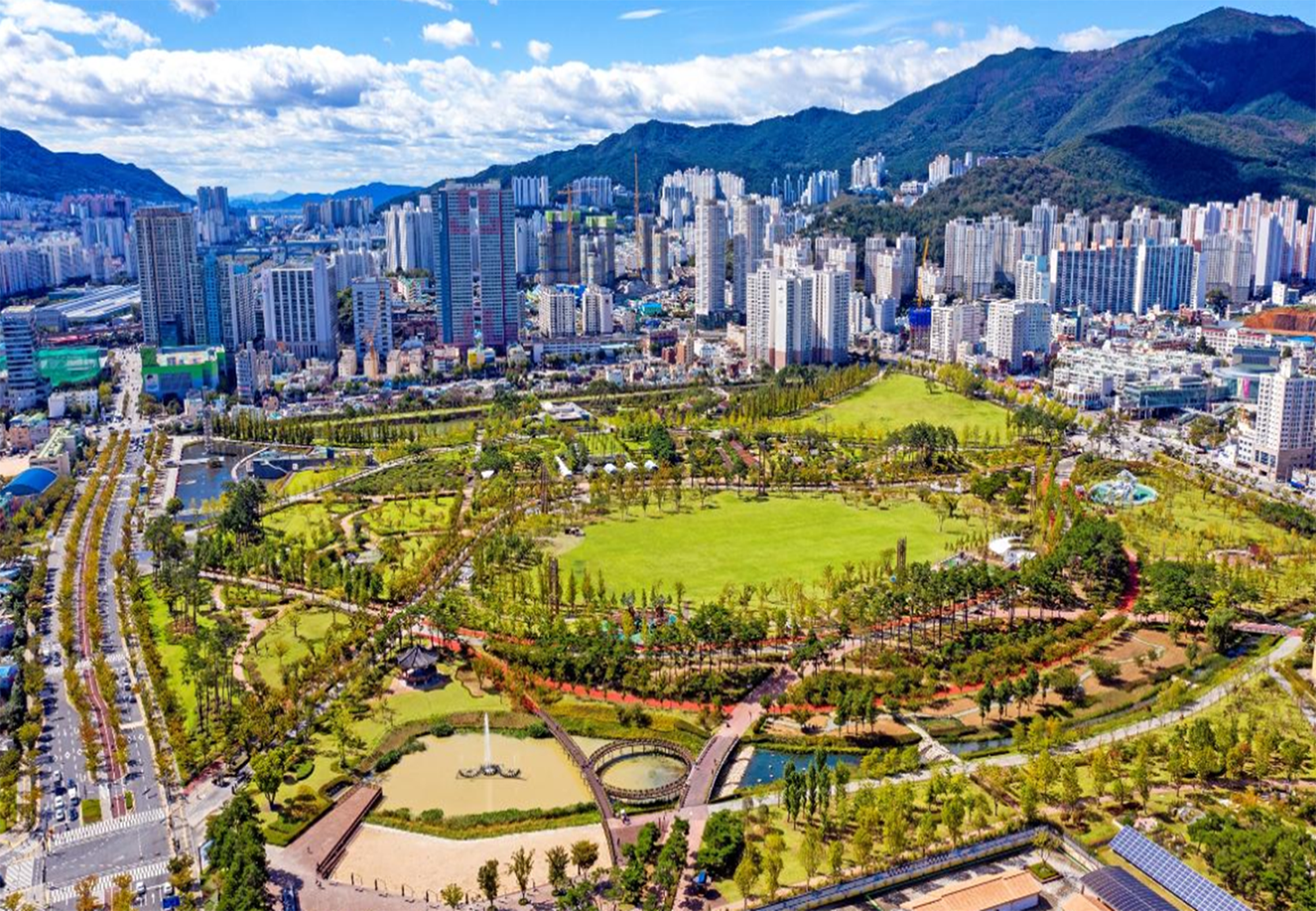
For 70 years after the liberation in South Korea, this place had been called the “US Army Camp Hialeah,” but now it’s back as a resting area for people in Busan.
- Location73, Simingongwon-ro, Busanjin-gu, Busan
- Closing DatesOpen all year round
- HoursEvery day 05:00–24:00
- Service FeesFree
- Traffic InformationTake Busan Metro, get off at Bujeon Station, and walk for 17 min from Exit 1. Take Bus, get off at Busan Citizens Park and walk for 6 min.
-
Seomyeon Medical Street
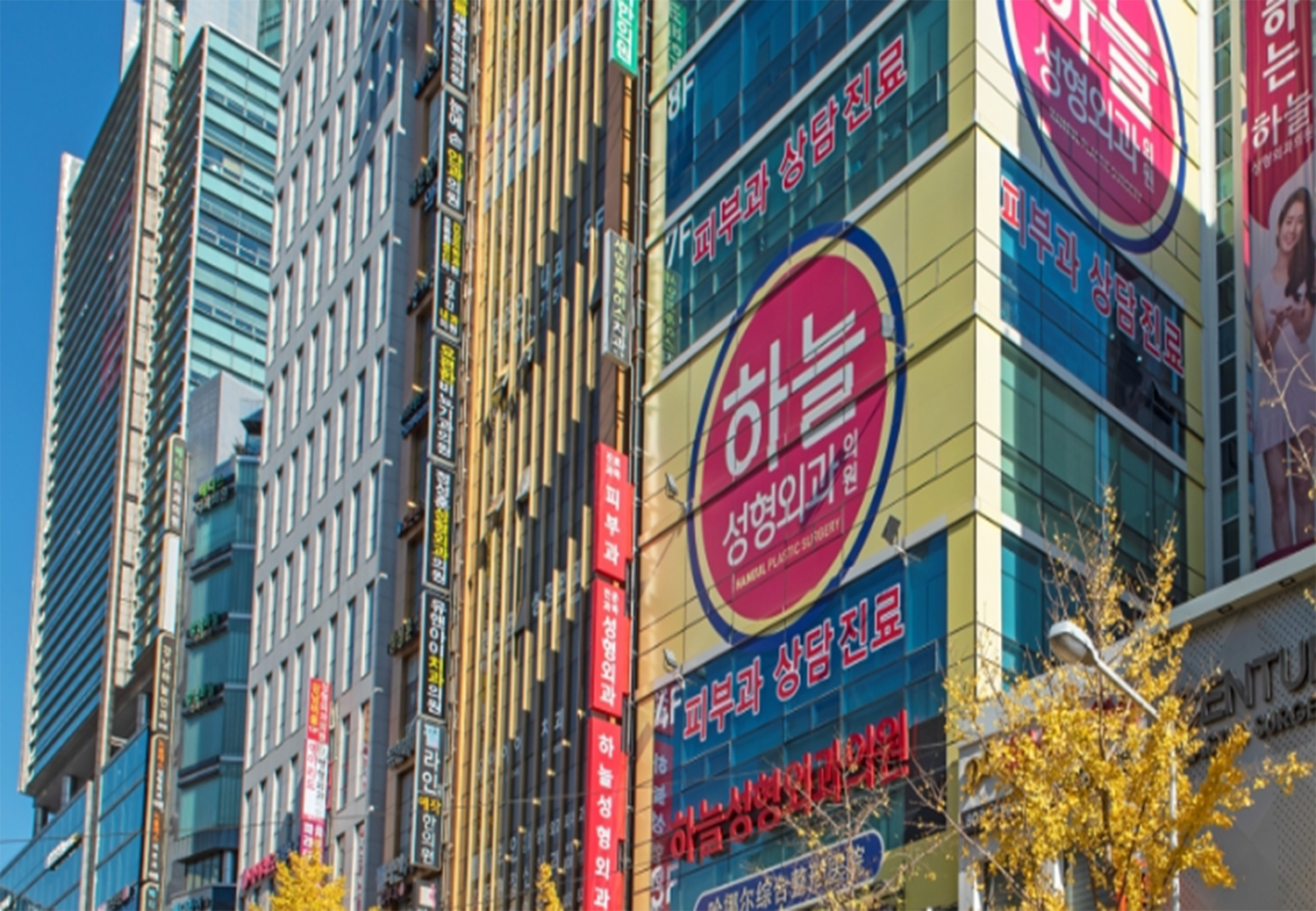
Seomyeon Medical Street is home to about 230 medical institutions including those for plastic surgery, dermatology, internal medicine, surgery, ophthalmology, and dentistry.
Seomyeon Medical Street, which offers both professional medical services and a great opportunity for sightseeing, is becoming a world-class medical tourism spot beyond the boundaries of Korea.